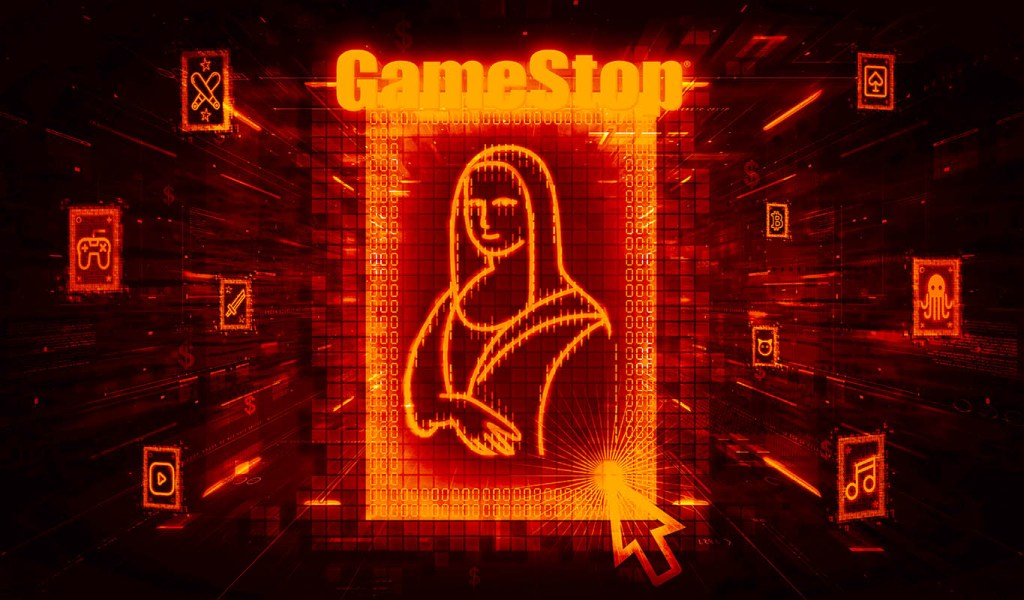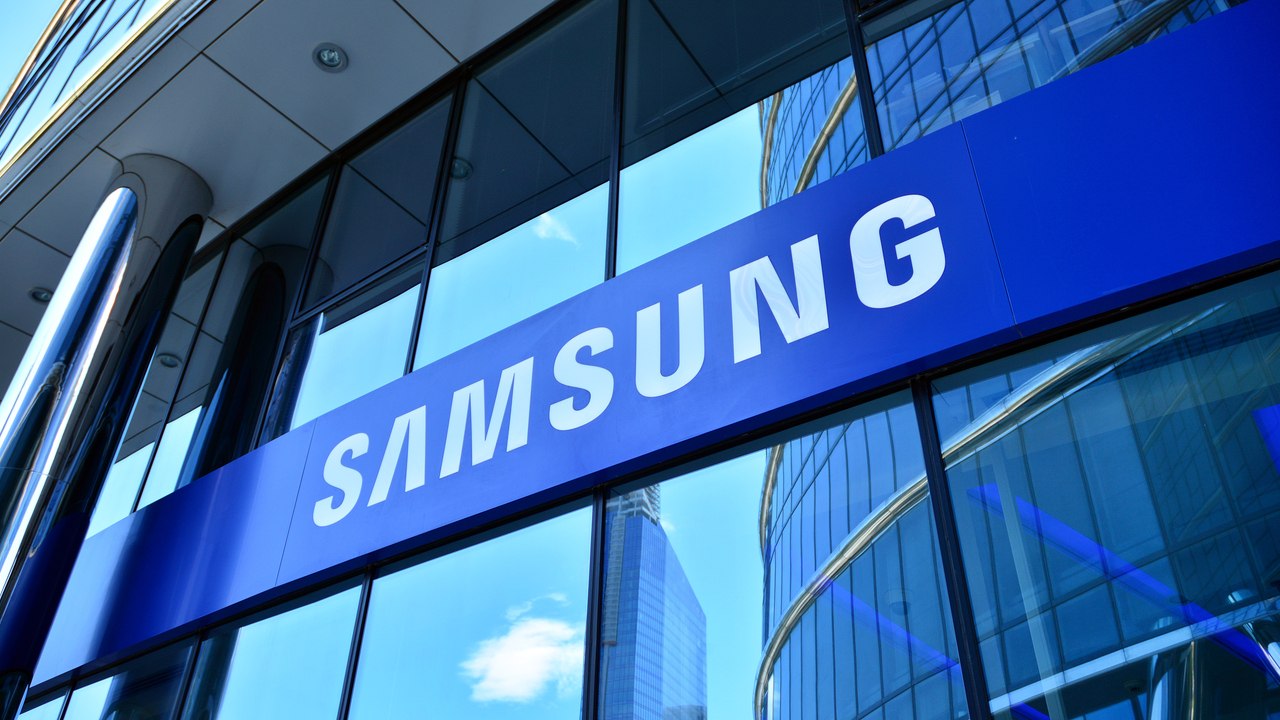 The largest non-fungible token (NFT) marketplace by trade volume, Opensea, has announced the company has let 20% of its staff go after CEO Devin Finzer said the layoffs were due to a combination of “crypto winter and broad macroeconomic instability.” Opensea’s decision follows the startup surpassing $31 billion in all-time NFT sales volume, and the […]
The largest non-fungible token (NFT) marketplace by trade volume, Opensea, has announced the company has let 20% of its staff go after CEO Devin Finzer said the layoffs were due to a combination of “crypto winter and broad macroeconomic instability.” Opensea’s decision follows the startup surpassing $31 billion in all-time NFT sales volume, and the […]
Alex Tapscott’s new book breaks down key DeFi concepts for business leaders.
Decentralized finance (DeFi) has massive potential to transform traditional financial services. Data from Emergen Research recently found that the global DeFi platform market size is expected to reach $507 billion by 2028. Moreover, the total value locked within DeFi currently exceeds $75 billion, demonstrating fast-paced growth compared to previous months this year.
Yet, DeFi’s potential may still not be realized by business leaders unfamiliar with the blockchain ecosystem. This notion is highlighted in Alex Tapscott’s recent book, Digital Asset Revolution. Tapscott, co-founder of the Blockchain Research Institute and managing director at Ninepoint Digital Asset Group, told Cointelegraph that he believes digital assets are going to be an important building block for a new internet, along with a financial industry that will change business models and markets. However, Tapscott noted that, to date, very few resources have been available to help enterprise leaders understand the relevance of digital assets. He said:
“Words like nonfungible tokens, central bank digital currencies and stablecoins are alien to people who are not involved in the world of crypto and blockchain. It’s our goal at the Blockchain Research Institute to illuminate the potential behind different digital assets, explaining what these are and why people should care about them in language that is easy to understand.”
In order to help readers understand the concepts behind DeFi, the first chapter of Digital Asset Revolution gives a broad overview of how decentralized finance could reinvent financial services. Tapscott begins by briefly summarizing how DeFi relates to nine specific functions of the finance industry: storing value, moving value, lending value, funding and investing, exchanging value, insuring value and managing risk, analyzing value, accounting for and auditing value and authenticating identity.
For example, in regard to storing value, Tapscott mentions that individuals and institutions can use noncustodial wallets like MakerDAO to act as their own banks. In terms of funding and investing, Tapscott notes that aggregators such as Yearn.finance and Rariable could potentially disintermediate investment advisers and robo advisers. Given these different use cases, Tapscott points out that the lines between traditional finance and DeFi will eventually blur as adoption rates grow. Yet, this most likely will not be the case in the immediate future, as skepticism around DeFi still remains.
Chapter one also addresses how a new ecosystem of digital assets is emerging from the growth of DeFi. This is an important aspect of the book, as co-author Don Tapscott told Cointelegraph that business leaders are still very much confused about what crypto represents. In order to clarify this, Digital Asset Revolution describes nine different digital asset classes, focusing on cryptocurrencies, protocol tokens, governance tokens, nonfungible tokens (NFTs), exchange tokens, securities tokens, stablecoins, natural asset tokens and central bank digital currencies (CBDC).

Cover of Digital Asset Revolution. Source: Blockchain Research Institute
While each of these assets is important, readers may be inclined to focus on the digital assets that are gaining momentum today. For example, the book features an entire chapter on stablecoins, demonstrating how these hold the potential to transform legacy payment infrastructures like SWIFT.
Recent: Crypto payments gain ground thanks to centralized payment processors
This does appear to be the case with some stablecoins, like Circle’s USD Coin (USDC). USDC was recently adopted by Banking Circle, a European bank focused on cross-border payments. But, some stablecoins are proving to be controversial. This was displayed following the collapse of the algorithmic stablecoin TerraUSD Classic (USTC) or Luna Classic (LUNC). As such, readers of Digital Asset Revolution should still conduct their own research when looking into different digital asset use cases, especially since the sector is constantly evolving.
CBDCs are another interesting topic mentioned throughout the book. Chapter four is dedicated entirely to CBDCs and features an edited transcript from a webinar hosted by the Blockchain Research Institute with J. Christopher Giancarlo, former chair of the United States Commodity Futures Trading Commission and co-founder of the Digital Dollar Project.
In this chapter, Giancarlo explains what a “digital dollar” represents, noting that the concept is very different from stablecoins, which are often tied to another asset of value. Giancarlo remarks that a digital dollar, also known as a CBDC, is a thing of value itself. While a number of concerns remain around CBDCs, Giancarlo also details why privacy is important in order for a digital dollar to be successful:
“At the Digital Dollar Project, we believe that developing the jurisprudence around the U.S. government’s approach to commercial activity using the sovereign currency, if it’s done right, could be a feature of a digital dollar that could be superior to other global reserve currencies.”
The chapter on NFTs may also pique readers’ interest, given the hype surrounding these digital assets. Alan Majer, founder of Good Robot — a company exploring artificial intelligence, robotics, blockchain and the metaverse — contributed to the chapter on NFTs, noting that “NFTs breathe life into digital notions of ownership.”
Given this, the author points out that enterprise leaders must start thinking creatively about tangible and intangible property rights. For example, Majer includes a chart here that displays NFT use cases, one being for intellectual property. The chart states that “NFTs could potentially confer licenses or titles not just of copyrighted works but also trademarks and patents as with 3D printing design files.” Another interesting use case displayed relates directly to DeFi, as NFTs have the potential to expand the range of assets to securitize, customize and derive additional value.
Digital assets aside, interoperability is discussed throughout chapter two of the book. According to Tapscott, interoperability is important for enterprise leaders to understand because this essentially allows different blockchain networks to communicate with one another.
“Smart contract platforms must interoperate seamlessly for DeFi and other new blockchain use cases to reach their full potential,” he writes. Tapscott then points out that smart contracting platforms like Cosmos and Polkadot were developed to address this issue. Anthony Williams, co-founder and president of the Digital Entrepreneurship and Economic Performance Center, elaborates on this throughout the second chapter, explaining how Cosmos and Polkadot allow blockchain networks to transfer value in a trustless and efficient manner.
While Digital Asset Revolution provides an in-depth overview of how different digital assets associated with DeFi can impact traditional finance, Tapscott is also aware of the challenges associated with adoption. The author mentions these dilemmas at the end of chapter one, noting that DeFi is still in its early days and requires growth.
For instance, he explains that blockchain networks powering DeFi applications still require a lot of energy. While a number of DeFi applications are built on Ethereum, statistics show that Ethereum’s annualized footprint in electricity consumption grew during 2021, exceeding the consumption of countries like Colombia or Czechia.
Tapscott also notes that governments may regulate DeFi, which could hamper growth. Additionally, Don Tapscott mentioned that DeFi may become bigger than the billion-dollar fintech sector, but this would require senior executives and intermediaries like banks to understand the value of decentralized finance. “The challenge of course is that leaders of the old middle are typically last to embrace the new middle,” he said.
Recent: Blockchain-based solutions aim to address US disaster relief
All things considered, though, Tapscott ends his overview in chapter one, suggesting that organizations that fail to implement DeFi aspects will be engulfed by “this hot new industry.” Tapscott added that releasing a book on DeFi during a bear market demonstrates a valuable lesson. He said:
“We are in crypto winter, which is actually the best time to drill down on ideas and get educated. Bull markets are for earning while bear markets are for learning.”
The views and opinions expressed here are solely those of the author and do not necessarily reflect the views of Cointelegraph.com.

Otherdeed land owners, known as Voyagers, will be able to participate in the experience via a token-gated asset confirmation.
The Otherside, a gamified metaverse project associated with the Bored Ape Yacht Club, is scheduled to deploy a technical demonstration of the first stage of the Otherside roadmap on July 17th at 4pm UTC.
The First Trip experience will be exclusively accessible to Otherdeed land owners, known as Voyagers, and has been described by the platform as a “celebration of what’s to come and an opportunity for Voyagers to gather, explore, and plan.”
The company indicated that thousands of users could participate in the event, navigating through the curated arena of play that has been specifically designed for the test, as well as guinea-pigging the “3D, hi-res Voyager prototypes that can walk, run, jump, and emote”, and a “private, tokengated livestream”, among other novel features.
An Otherdeed asset for the Otherside has sustained a floor price of circa 2.9 ETH over the past few weeks, with 100,000 assets in supply and 35,000 owners at the time of writing.
The First Trip demo arrives less than a week after the occurrence of two load tests on July 6th and July 9th with the intention of assessing the technical boundaries of the Otherside platform, and the collaborative dynamics with the Improbable team.
The events witnessed frenetic crowds of faceless avatars with overhead name tags and reactionary emojis sprinting, dancing, and acrobatically flipping around a blank-white universe as giant moderators towered over and bellowed instructions.
Users were advised to engage in activities to test the gaming experience, such as inputting their age, experience score, and objectives for their gameplay, before choruses of degenerates relayed calls of ‘Otherside’ and ‘We love Koda’.
Twitter user and owner of BAYC #8412, null.eth and Sandbox ambassador allo.eth, each published videos on Twitter which perfectly captured the experience of the test event.
Despite the visually comedic ant-hill, crabs-in-a-bucket appearance of the load tests, there was widespread praise throughout the community for the visual rendering quality, spatial audio and overall experience, with high anticipations for the upcoming First Trip and future full-scale rollouts.
Co-founder of digital fashion brand RTFKT Studios, Benito replied by stating that: “2.5K people were connected and moving live. That's huge, the tech has been proven live with gated access and real people.”
While BAYC co-founder, Gargamel, known as Garga within the community, shared: “Had about 2.5k concurrent users running around in the neutral space. Tons of great info compiled to make sure First Trip goes smoothly, and [we are] taking all your notes from Discord as well.”
Less favorably, some compared the uncanny design similarities to the starter templates available through game engines such as Unreal Engine. It remains to be seen whether Yuga Labs intend on building and developing their own game engine to launch the Otherside and innovate on the future of metaverse gaming, or simply utilize a pre-existing model.
Related: Otherside NFTs fall below mint price while cheaper ETH sees sales volume boost
For many participants of the NFT ecosystem, mentions of the Otherside may still be synonymized with the gas-war minting saga and subsequent financial begrudgery in late-April. However, since then, the publication of an eight-part roadmap for the Obelisk mission, and consistently executed testnets have cultivated a more positive narrative around the metaverse project.

While on-chain activity slowed down, the DeFi industry has managed to retain most of its daily active users.
Despite the decentralized finance (DeFi) market suffering a 74.6% market cap decline in Q2, user activity has remained relatively resilient, says CoinGecko.
In a report published by the crypto data aggregator on July 13th, CoinGecko reported that the overall DeFi market cap fell from $142 million to $36 million over the second quarter, due mainly to the collapse of Terra and its stablecoin TerraUSD (UST) in May.
CoinGecko also noted a rise in decentralized finance DeFi exploits in the quarter contributed to the fall, including Inverse Finance and Rari which suffered hacks of $1.2 million and $11 million respectively.
“These attacks have negatively impacted token prices as investors lose faith in these hacked protocols.”
However, CoinGecko also noted that while on-chain activity slowed down, the DeFi industry has managed to retain most of its daily active users.
It noted that the number of daily active users in DeFi decreased only 34.5% from 50,000 to 30,000 in Q2, added there were also multiple instances that caused a spike in DeFi activity.
The first spike was observed in May following Terra’s collapse, leading to users moving to Curve Finance and Uniswap on mass to sell their falling LUNA and UST.

Similarly, another spike in DeFi user activity took place in June according to CoinGecko, when crypto lending platform Celsius enforced withdrawal restrictions citing financial difficulties. Celsius filed for bankruptcy on July 13.
“In both events where centralized entities have failed, users have flocked to enjoy DeFi’s permissionless nature.
The report also found that trading volume for non-fungible tokens (NFTs) fell 26.2.% from its peak in June 2021 to $7.6 billion in the quarter, led mainly by a decline in the trading volume of NFTs offered on the Ethereum network.

June 2022 also saw the lowest trading volume in 12 months, with NFT trading volume reaching $830 million, coinciding with a collapse of the floor price of NFTs.
Related: Terra crash highlights stablecoin risk to financial stability: ECB

Retail giant GameStop is launching the beta version of its non-fungible token (NFT) marketplace, already outpacing one prominent competitor. Though GameStop released its NFT marketplace just two days ago, it has already nearly doubled the total amount of Ethereum (ETH) NFT sold over Coinbase’s NFT marketplace, which launched months ago. According to data from GameStop, […]
The post GameStop NFT Marketplace Launches Beta, Nearly Doubles Total Coinbase NFT Ethereum Sales in Just Two Days appeared first on The Daily Hodl.
 The blockchain company Polygon has been chosen to join Disney’s Accelerator program, according to a Walt Disney Company blog post published on Wednesday. The company’s 2022 Disney Accelerator initiative is a business development program that aims to “accelerate the growth of innovative companies from around the world.” Disney’s 2022 Accelerator Is Focused on Artificial Intelligence, […]
The blockchain company Polygon has been chosen to join Disney’s Accelerator program, according to a Walt Disney Company blog post published on Wednesday. The company’s 2022 Disney Accelerator initiative is a business development program that aims to “accelerate the growth of innovative companies from around the world.” Disney’s 2022 Accelerator Is Focused on Artificial Intelligence, […]
Continued adoption of non-fungible tokens across a variety of industries from video gaming, music, art, and digital collections could see the sector valued at $231 billion by 2030.
A market report published by Verified Market Research (VMR) provides a lofty prediction for the future of the non-fungible token (NFT) market, projecting its value to swell to $231 billion by 2030.
The global research and consulting firm valued the global NFT market at $11.3 billion in 2021 as part of 202 page deep dive into the burgeoning space. VMR predicted that the sector will grow at a compound annual growth rate of 33.7% over the next eight years. A key driver of demand for NFTs is their proliferation across multiple industries and walks of life, including music, films, and sports. The report highlights some key areas of interest and use cases that have helped drive NFT sales.
The gaming sector has been a key driver of adoption, with the report highlighting Enjin as one of the first major gaming firms to combine blockchain technology with its infrastructure and launch its own token (ENJ). The ecosystem transformed in-game assets into NFTs to allow gamers to monetize in-game assets.
Play-to-earn gaming also tapped into NFT markets, with Axie Infinity offering users in the Philippines an alternative revenue source during the Covid-19 pandemic that has been the subject of much intrigue and inevitable regulatory attention.
Related: CryptoPunk sells for $2.6M as big NFT brands floor prices increase
The world of sport continues to dabble in NFT offerings, with the VMR report highlighting Dapper Labs’ partnership with UFC to launch collectibles. UFC Strike is a similar concept to the widely popular NBA Top Shots, with NFTs of highlights set to digitize and monetize UFC history.
In the business world, NFT marketplace OpenSea integrated Adobe service to introduce a number of features to its offering as conventional IT solutions converge with blockchain-based platforms.
VMR’s report shared a similar outlook to a report on NFTs released by growth consulting firm SkyQuest Technology in May 2022. The firm projected an analogous growth rate of 34% for the sector between 2022 and 2028, while valuing the market at $15.7 billion in 2021.
 While digital currency markets have dropped in value during the last two months, weekly non-fungible token (NFT) sales have slid lower as well. Seven-day statistics show that NFT sales managed to rise more than 10% higher than the week prior. One particular NFT sale, Cryptopunk #4,464, helped push this week’s sales volume up as the […]
While digital currency markets have dropped in value during the last two months, weekly non-fungible token (NFT) sales have slid lower as well. Seven-day statistics show that NFT sales managed to rise more than 10% higher than the week prior. One particular NFT sale, Cryptopunk #4,464, helped push this week’s sales volume up as the […] Electronics giant Samsung has announced the launch of Space Tycoon, a metaverse-based experience built as part of the Roblox world. The gaming metaverse, which is directed to entertain Gen Z users, will feature a world in which Samsung products can be constructed by picking their fundamental components. The experience will also include a shop for […]
Electronics giant Samsung has announced the launch of Space Tycoon, a metaverse-based experience built as part of the Roblox world. The gaming metaverse, which is directed to entertain Gen Z users, will feature a world in which Samsung products can be constructed by picking their fundamental components. The experience will also include a shop for […]